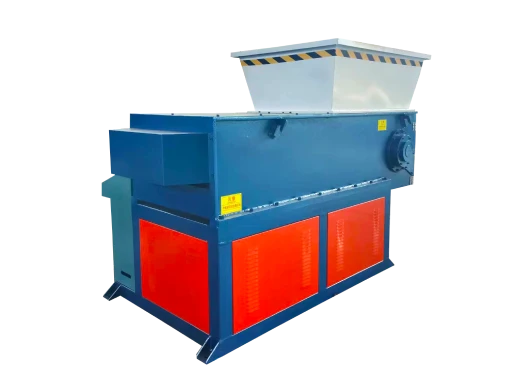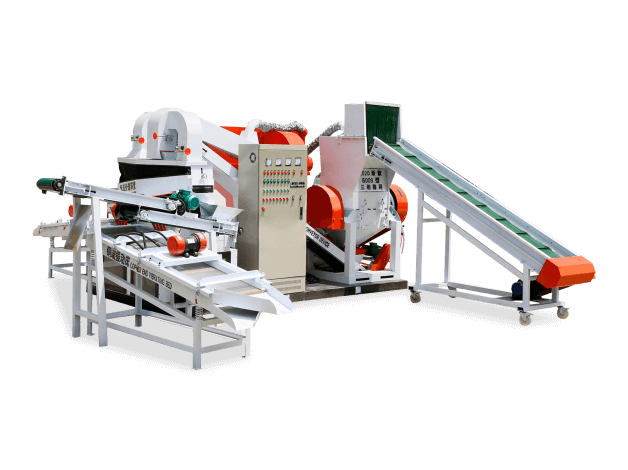ntroduction: The Growing Importance of Specialty Paper Recycling
In today’s rapidly evolving industrial landscape, the sustainable management of specialized waste materials like insulating paper has become increasingly crucial. As industries worldwide grapple with environmental challenges and resource scarcity, the recycling of electrical insulating paper represents both a significant opportunity and a complex technical challenge. This comprehensive guide explores how modern shredding technology, specifically single-shaft shredders, is revolutionizing the pretreatment process for waste insulating paper, enabling more efficient recycling workflows and contributing to a circular economy.
At FORCE Shredder (https://www.forceshredder.com/), we specialize in developing robust industrial shredding solutions that transform challenging recycling scenarios into profitable, sustainable operations. Our single-shaft shredders have demonstrated remarkable effectiveness in processing insulating paper, a material that requires careful handling to maintain its recycling value while ensuring operational efficiency.
Understanding Insulating Paper and Its Recycling Challenges
Insulating paper serves critical functions in electrical equipment and transformers, where its dielectric properties and thermal stability are essential for safe operation. However, these very properties that make insulating paper valuable in electrical applications also present unique challenges for recycling:
– Material Complexity: Insulating papers often contain specialized coatings, impregnants, or treatments that enhance electrical performance but complicate recycling processes.
– Contamination Concerns: After service, insulating paper may absorb oils, moisture, or other contaminants that must be addressed during recycling.
– Fiber Degradation: The paper fibers undergo degradation during electrical equipment use, potentially affecting their quality for recycling.
Traditional recycling methods often struggle with these challenges, resulting in inefficient processes and suboptimal material recovery. This is where specialized pretreatment through shredding becomes invaluable.
Single-Shaft Shredders: The Optimal Solution for Insulating Paper Pretreatment
Single-shaft shredders have emerged as the preferred technology for pretreatment of waste insulating paper due to their unique combination of power, precision, and versatility. Unlike dual-shaft models designed for bulkier materials, single-shaft shredders excel at processing materials like insulating paper that require controlled size reduction with consistent output.
Key Advantages of Single-Shaft Shredders for Insulating Paper:
1. Controlled Particle Size Reduction: Our single-shaft shredders feature adjustable screens that ensure precise control over output particle size, which is crucial for subsequent recycling stages .
2. High-Torque Processing: With rotational speeds typically ranging from 75-85 RPM and power from 18.5-75 kW, these machines deliver the necessary torque for efficient insulating paper processing without excessive energy consumption .
3. Compact Footprint: The relatively small dimensions (typically 1,760-2,850mm in length) make these shredders ideal for facilities with space constraints while maintaining robust processing capabilities .
4. Material Versatility: Beyond insulating paper, these shredders effectively process related materials often found in electrical waste streams, including certain plastics, wood, and mixed industrial waste .
The Pretreatment Process: How Shredding Optimizes Insulating Paper Recycling
The implementation of single-shaft shredding as a pretreatment step transforms the entire recycling workflow for insulating paper through several key mechanisms:
1. Volume Reduction and Density Optimization
Shredding dramatically reduces the volume of insulating paper, typically achieving a 4:1 to 5:1 volume reduction ratio. This compaction effect significantly decreases storage requirements and transportation costs while creating a more homogeneous material stream for downstream processing.
2. Enhanced Liberation and Separation Efficiency
The shredding action effectively liberates contaminants and different material components, making subsequent separation processes more efficient. For insulating paper, this means better separation of paper fibers from potential contaminants or composite materials, resulting in higher purity output and improved recycling yields.
3. Improved Pulping and Fiber Processing
In recycling processes that involve repulping, shredded insulating paper demonstrates superior performance compared to unshredded material. The increased surface area and uniform particle size facilitate more efficient chemical penetration and mechanical action during pulping, leading to:
– Reduced chemical consumption
– Shorter processing times
– More complete fiber separation
– Higher quality recycled pulp
This optimization aligns with findings from specialized paper recycling methodologies, where proper pretreatment significantly enhances process efficiency .
4. Controlled Material Characteristics for Downstream Processing
Single-shaft shredders produce output with consistent particle size distribution, typically ranging from 10-250mm depending on screen selection . This consistency is vital for optimizing the performance of subsequent equipment in the recycling line, including:
– Conveying systems
– Sorting equipment
– Cleaning stations
– Additional size reduction units
Integrating Shredding into Comprehensive Insulating Paper Recycling Systems
A well-designed insulating paper recycling system incorporates single-shaft shredding as the crucial first step in a multi-stage process:
Stage 1: Primary Shredding
Our single-shaft shredders perform the initial size reduction, transforming bulk insulating paper into manageable fragments while liberating contaminants.
Stage 2: Material Conditioning
The shredded material may undergo additional conditioning to address specific contaminants or prepare it for further processing.
Stage 3: Specialized Separation
Advanced separation technologies target and remove non-paper components, recovering high-value materials and improving paper stream purity.
Stage 4: Fiber Processing
The purified paper fragments undergo specialized processing to regenerate usable paper products or create new composite materials, similar to approaches used in innovative recycled paper applications .
This integrated approach ensures maximum material recovery while minimizing waste sent to landfill.
Environmental and Economic Benefits of Optimized Insulating Paper Recycling
Implementing specialized shredding pretreatment for insulating paper recycling delivers significant advantages:
Environmental Impact:
– Waste Reduction: Dramatically decreases volumes of industrial waste requiring landfill disposal
– Resource Conservation: Extends the useful life of valuable paper fibers, reducing demand for virgin materials
– Energy Efficiency: Optimized recycling processes consume less energy compared to manufacturing from virgin materials
– Emissions Reduction: Lowers greenhouse gas emissions associated with both waste disposal and virgin material production
Economic Benefits:
– Material Recovery: High-quality recycled paper fibers command premium prices in specialized markets
– Operational Efficiency: Reduced transportation and storage costs due to volume reduction
– Regulatory Compliance: Helps meet increasingly stringent waste management regulations
– Sustainability Credentials: Enhanced corporate environmental profile supporting ESG initiatives
FORCE Shredder Solutions: Engineered for Insulating Paper Applications
At FORCE Shredder, we design and manufacture single-shaft shredders specifically optimized for challenging materials like insulating paper. Our machines incorporate several key features that make them ideal for this application:
Robust Construction
– Heavy-duty cutting rotors with specialized geometries for fibrous materials
– Wear-resistant components that withstand abrasive paper treatments
– Reinforced machine frames that maintain alignment under continuous operation
Advanced Control Systems
– PLC-based automation for consistent operation and easy integration
– Torque monitoring and protection systems to prevent damage from contaminants
– Remote monitoring capabilities for proactive maintenance and optimization
Application-Specific Customization
– Custom screen configurations for optimal particle size control
– Specialized cutting geometries for different insulating paper types
– Integration support for complete recycling system design
Our single-shaft shredders have demonstrated excellent performance in various paper recycling applications, handling throughputs from 300 kg to 25 tons per hour depending on specific machine configuration and material characteristics .
Future Trends in Insulating Paper Recycling Technology
The field of specialized paper recycling continues to evolve, with several emerging trends likely to shape future practices:
Advanced Sorting Technologies
Innovations in sensor-based sorting, including hyperspectral imaging and AI-assisted identification, will enable more precise separation of different paper grades and contaminants.
Fiber Quality Enhancement
New chemical and mechanical treatments will improve the quality of recycled insulating paper fibers, potentially expanding applications for recycled content.
Circular Economy Integration
Increasing emphasis on true circularity will drive development of closed-loop recycling systems specifically designed for electrical insulation materials.
Digitalization and Optimization
IoT connectivity and data analytics will enable real-time optimization of recycling processes, further improving efficiency and material recovery.
Conclusion: Transforming Insulating Paper Waste into Valuable Resources
The implementation of single-shaft shredding technology as a pretreatment step represents a significant advancement in insulating paper recycling. This approach addresses the unique challenges of these specialized materials while unlocking substantial economic and environmental value.
At FORCE Shredder, we’re committed to developing solutions that transform industrial waste management challenges into sustainable opportunities. Our single-shaft shredders provide the robust, reliable performance necessary to build effective insulating paper recycling systems that contribute to both business success and environmental stewardship.
By embracing these advanced pretreatment technologies, industries can move closer to achieving true circularity in paper resource management, reducing waste generation while promoting green production practices across the industrial sector.
To learn more about our single-shaft shredding solutions for insulating paper and other specialized recycling applications, visit our website at https://www.forceshredder.com/ or contact our technical team for a customized consultation.










